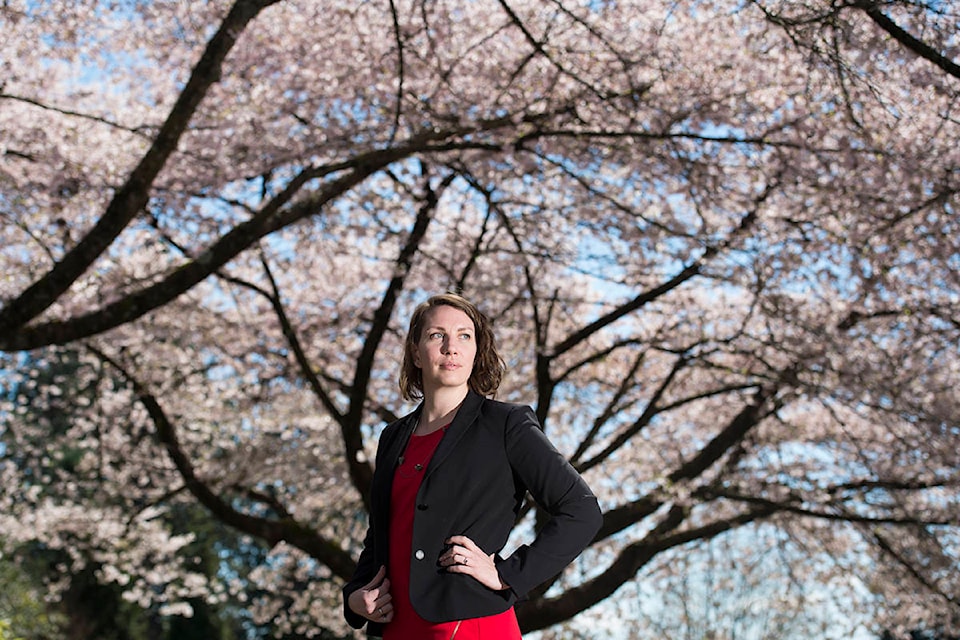It wasn’t until the rise of the #MeToo movement that Julia Gartley began talking more about that night, early in her mining career.
The engineer was one of the few women at a remote mining operation when, after a social gathering one evening, she says a co-worker drugged and sexually assaulted her.
At the time, Gartley didn’t know what to do or how to report it.
“There were very few females there, no women in the senior management or the management at site,” she said.
“And I was new, so I didn’t know people. You didn’t really know who … you could confide in.”
But as more women have come forward since the Harvey Weinstein scandal sparked a global conversation about sexual harassment and violence in the workplace, Gartley heard echoes of her own story.
It’s one of her motivating factors for joining Me Too Mining and why the industry advocacy group has started offering bystander intervention training for the industry.
“I don’t want to hear the story of another young person going through a similar incident that I did,” Gartley said.
Bystander intervention training has been used for years at universities and colleges to prevent sexual assault, but trainers say it is gaining traction in Canadian workplaces.
“We’re seeing it from across the board,” said Farrah Khan, manager of Ryerson University’s Office of Sexual Violence who also teaches bystander intervention training in the private sector.
The aim is to prevent sexual harassment, violence, or any other inappropriate behaviour, by training people how to recognize potentially dangerous situations — and intervene.
Strategies include telling the offender that their behaviour is inappropriate, starting an unrelated conversation with the person being harassed, creating a distraction or asking the victim afterwards if they need help.
Not only are people unsure of what to do when faced with inappropriate behaviour, many don’t feel like it is their place to act, said Louise Taylor Green, chief executive of the Human Resources Professionals Association.
“Most people don’t even see it in their role,” she said. “They think, ‘I wasn’t involved, it has nothing to do with me.’”
That instinct is what the training aims to help overcome. If witnesses to inappropriate situations step in, their actions can potentially prevent escalation, Taylor Green said.
“Quite often you can identify that there were risk factors and points that were known, in hindsight, that had we taken action or had there been appropriate education, it might have changed the outcome or prevented the situation in its entirety,” she said.
Data from the education sector corroborates that thinking.
A study published in the American Journal of Preventative Medicine in 2017 studied the effectiveness of the Green Dot bystander training on high schools in Kentucky and found that it “significantly decreased not only sexual violence perpetration but also other forms of interpersonal violence perpetration and victimization.”
Broader interest in bystander training in Canada has risen in the wake of #MeToo, but after the 2016 sexual assault trial of former CBC star Jian Ghomeshi, trainers say.
Recent legislative changes in Ontario are another driving factor behind the increase.
The provincial government rolled out new sexual violence and harassment legislation in 2016 that amended the Occupational Health and Safety Act which set out, among other things, more employer responsibilities such as the duty to provide appropriate training to address sexual harassment.
In turn, the HRPA has seen a recent surge in registrations for programs that mention or incorporate bystander training, Taylor Green said.
The number of attendees to these HRPA-sponsored programs has soared, with 858 in the first four months of this year compared with 353 in all of 2018, she said.
Rubin Thomlinson, a law firm focused on workplace investigations and training for human resources professionals, has also seen an increase in requests for bystander training since #MeToo, said co-founder and co-managing partner Janice Rubin.
“This is a lever to pull and there is data to suggest that it is effective,” she said.
A 2018 poll conducted by the HRPA found that 17 per cent of respondents have witnessed an employee being sexually harassed at work and four in five Canadians said they had unwanted experiences at work but didn’t report them to their employers.
Bystander training goes beyond the basics of identifying unethical behaviour and builds “shared responsibility,” said Khan.
Gartley did not report her alleged perpetrator, but did stay with the company — which she did not want to name. He eventually left the site.
When contacted by the Canadian Press, a company spokesman said it was not aware nor had any records of the alleged incident but was ”saddened and disappointed that something like this ever could have happened.”
The spokesman added that the firm has several mechanisms in place to deal with these issues, such as a whistleblower line, but said past policies were likely less robust.
Gartley isn’t sure if bystander intervention training for her co-workers could have prevented her alleged assault, but it could have made things easier to handle.
Most of her former co-workers were good people, as are those she has worked with over the years, she adds, and many people would have helped if they knew how.
“I know that they would have done something. And I think that by doing this, and by joining Me Too Mining and providing this training and education for people at work, we’re giving them the power to change their workplaces.”
READ MORE: Sexual harassment complaints soaring amid ‘frat boy culture’ in Canada’s airline industry
READ MORE: #MeToo at work: B.C. women share horrifyingly common sexual assaults
Armina Ligaya, The Canadian Press
